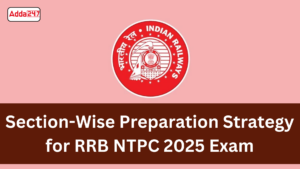Table of Contents
The Lokapal and Lokayuktas
The Lokpal
A Lokpal is an anti-corruption authority or body of ombudsman who represents the public interest in the Republic of India. The current Chairperson of Lokpal is Pradip Kumar Mohanty. The Lokpal has jurisdiction over the central government to inquire into allegations of corruption against its public functionaries and for matters connected to corruption. The Lokpal and Lokayuktyas Act was passed in 2013 with amendments in parliament, following the Jan Lokpal movement led by Anna Hazare in 2011. The Lokpal is responsible for enquiring into corruption charges at the national level while the Lokayukta performs the same function at the state level.
A brief history
Since 1963, India has been nurturing the ambition to appoint a Lokpal, a phrase coined by L.M. Singhvi. Copied from Sweden’s Ombudsman and its adaptation in the U.K. in 1967, the idea was to expose ‘maladministration’, which British MP Richard Crossman defined as “bias, neglect, inattention, delay, incompetence, ineptitude, arbitrariness, and so on”. Despite affirmations to its need, no one wanted a Lokpal in India, preferring instead the mild Vigilance Commission from 1964 to 2003.
In 1960, the Indian parliament first discussed the idea of appointing an ombudsman who would be empowered to look into complaints against public functionaries, including MPs. In 1966, the first ARC (Administrative Reforms Commission) issued recommendations for creating an ‘Ombudsman’ in India. It was a two-tier system, one for the central and the other for the state level, and both were to work independently as per the recommendations made. The Lok Pal Bill was introduced in Parliament 8 times but was not passed.
In the year 2002, the M.N. Venkatachiliah Committee reviewed the functioning of the Constitution and made recommendations for appointing the Lok Pal and Lokayuktas; However, the committee kept the Prime Minister of India out of the jurisdiction of the Lokpal.
The second Administrative Reforms Commission (ARC), under the Chairmanship of Veerappa Moily, recommended the immediate creation of the office of the Lok Pal.
In 2011, the Indian government established a Group of Ministers (GoM) with the purpose of formulating recommendations to address the pervasive issue of corruption in the country. One of the key objectives was to evaluate the long-standing Lok Pal Bill, aimed at creating a mechanism to investigate allegations of corruption against designated public officials. Subsequently, the Lokpal Bill of 2011 was introduced in Parliament, outlining provisions for the appointment of a Lokpal, whose primary responsibility would be to investigate complaints of corruption involving public servants.
Composition Of The Lokpal
Consisting of not more than nine members (a chairperson and up to eight other members). The president of India shall appoint each member of the Lokpal based on the recommendations of the Selection Committee that comprises of:
(a) the Prime Minister – Chairperson And members are
(b) the Speaker of the House of the People
(c) the Leader of Opposition in the House of the People
(d) the Chief Justice of India or a Judge of the Supreme Court nominated by him
(e) one eminent jurist, as recommended by the chairperson and members referred to clauses (a) to (d) above, to be nominated by the President.
The Lokayukta
The Lokayukta is an anti-corruption ombudsman organization in the Indian states. Once appointed, Lokayukta can not be dismissed nor transferred by the government, and can only be removed by passing an impeachment motion by the state assembly.
The Administrative Reforms Commission (ARC) headed by Morarji Desai submitted a special interim report on “Problems of Redressal of Citizen’s Grievances” in 1966. In this report, the ARC recommended the setting up of two special authorities designated as ‘Lokpal’ and ‘Lokayukta’ for the redressal of citizens’ grievances.
The Lokayukta, along with the Income Tax Department and the Anti Corruption Bureau, mainly helps people publicize corruption among Politicians and Government Officials. Many acts of the LokAyukta have resulted in criminal or other consequences for those charged.
Maharashtra was the first state to introduce the institution of Lokayukta through The Lokayukta and Upa-Lokayuktas Act in 1971. This was followed by similar acts that were enacted by the states of Odisha, Rajasthan, Bihar, Uttar Pradesh, Karnataka, Madhya Pradesh, Andhra Pradesh, Gujarat, Kerala, Tamil Nadu and the union territory of Delhi.
The Maharashtra Lokayukta is considered the weakest Lokayukta due to lack of powers, staff, funds, and an independent investigating agency. On the other hand, the Karnataka Lokayukta is considered the most powerful Lokayukta in the country.
Key Provisions of the Lokpal and Lokayuktas (Amendment) Act, 2016
- The Lokpal and Lokayuktas (Amendment) Act, 2016 amended the Lokpal and Lokayukta Act, 2013.
- This Act replaces the time limit of 30 days, now the public servants will make a declaration of their assets and liabilities in the form and manner as prescribed by the government.
- It also amended section 44 of the 2013 Act that deals with the provision of furnishing of details of assets and liabilities of public servants within 30 days of joining the government service.
Difference between Lokpal and Lokayukt
The key differences between Lokpal and Lokayukt are as follows:
| Basis of Comparison | Lokpal | Lokayukt |
| Jurisdiction | Central government level | State government level |
| Reach | Nationwide | Varies from state to state |
| Composition | Chairperson and up to 8 members | Typically headed by a retired judge or eminent person |
| Appointment | President | Governor |
| Powers | Investigation and Prosecution of Corruption Cases | Investigation and recommendation of action, and prosecution may vary by state |
| You may also like to read: | |
| Major Rock Edicts of Ashoka | National Animal of India: Royal Bengal Tiger |
| Important lakes of India |
National Emergency Definition, Introduction, Types: Article 352 and FAQs |



 Free Study Material for CBSE Junior Assi...
Free Study Material for CBSE Junior Assi...
 Free Study Material for SSC CGL 2025, Do...
Free Study Material for SSC CGL 2025, Do...
 Section-Wise Preparation Strategy for RR...
Section-Wise Preparation Strategy for RR...


